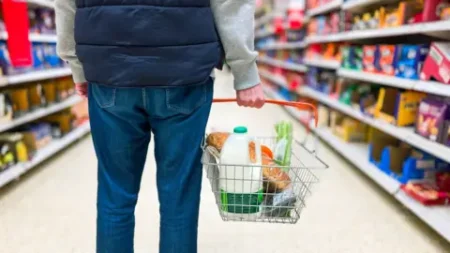The growing popularity of Labubu dolls, a product from the Chinese toy company Pop Mart, has recently captured the attention of children and collectors alike, thanks in part to their viral presence on TikTok. However, this surge in demand has also given rise to a concerning trend: criminals are cashing in on the popularity of these toys by flooding the market with dangerous counterfeit versions.
In an operation on the outskirts of London, local Trading Standards officers took action against this illegal trade. The officers discovered a hidden network of storage facilities filled with thousands of imitation Labubu dolls, lined up and stacked high. Their investigation, which started from a corner shop in South Wales, culminated in an intelligence-led raid that revealed the magnitude of the counterfeiting operation. The police have estimated that the seized fakes represent millions of pounds worth of potentially hazardous products linked to the dolls’ viral fame.
Popularity has certainly translated into financial success for Pop Mart, with Forbes reporting that the demand for authentic Labubu dolls helped the company more than double its revenue to a staggering £1.33 billion ($1.81 billion) last year. These toys have garnered substantial attention and adoration amid fans, leading some to wait in long lines or travel considerable distances just to purchase an original doll. However, the quest for an authentic Labubu has become perilous due to the overwhelming influx of counterfeits flooding the market.
Many reports have indicated that scalpers are purchasing genuine Labubus in bulk to resell at inflated prices, leading to a significant uptick in counterfeit dolls being sold to unsuspecting consumers. In recent months, UK Border Force has intercepted and confiscated a record number of counterfeit toys arriving through various ports. Authorities suspect these fakes are often made with substandard and potentially hazardous materials that could pose safety risks for children.
Rhys Harries from Trading Standards highlighted some alarming concerns regarding the quality of these counterfeit toys. He noted that the heads and feet of the fake dolls can easily detach, leading to serious choking hazards. His team uses testing equipment designed to model a child’s throat to assess the safety of toy components, revealing that many counterfeit dolls could present significant dangers to young children.
For example, Jade, a Caerphilly mother, recounted her experience purchasing counterfeit Labubus from a local shop for her son Harri’s sixth birthday. Despite being aware of their fake status, she opted for the cheaper option, costing only about £10 compared to the authentic versions priced at £80. However, she quickly discovered the poor quality of the fakes, with parts falling off shortly after giving them to her son. If Harri had been younger and unable to communicate effectively, the outcome could have been far worse, given the potential choking hazards for toddlers.
Criminal organizations capitalize on trend spikes to make significant profits from counterfeit products, often disregarding safety concerns. Kate Caffery, deputy director of intelligence at the Intellectual Property Office, pointed out that counterfeiting serves as the second-largest source of criminal revenue globally, following drug trafficking. Criminal networks operate quickly to meet demand for trendy items, with little regard for consumer safety. They are willing to engage in hazardous practices by utilizing materials that may include toxic chemicals harmful to health.
Authorities have raised alarms about counterfeits originating from countries known for manufacturing knock-off toys, including regions like China, Hong Kong, and Turkey. They advise consumers to remain vigilant against unusually low prices, poor packaging quality, or spelling mistakes on labels, which often serve as indicators of counterfeit products.
While the issue of counterfeit Labubu dolls grows increasingly severe and pervasive, Trading Standards officers are committed to continuing their investigations to dismantle these illegal operations. Their efforts underscore the significant responsibility of consumers to remain proactive in protecting themselves and their children from the risks posed by fake products in an emerging digital marketplace.











